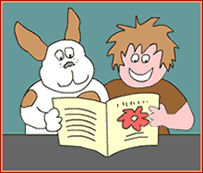English was a second language for me. We learned it at school, but after we learned to read in Russian. The way we were taught was also very different. So now, when the time came to teach N. how to read, I look for any help I can get. Sometimes I even wish there was a class for parents "Teaching your child to read 101".
N. already knows all the letter sounds and can read 3 letter words, but as I read somewhere, in order to be good readers kids need to be able to recall the letter sounds almost automatically, without thinking too much. That means they need a lot of practice. So were are on a lookout for some fun resources.
I came across the FREE all-in-one Phonics program online - Progressive Phonics. There are mini books that you read WITH your child (on screen or print out), word writing worksheets, word search puzzles, games and more.
Handwriting is an important part of Progressive Phonics, and for good reason: many educators are returning to basics -- reading AND writing -- as the key to literacy. Simply put, when children write what they learn, they learn it better.
The underlying reason has roots in physiology: when we write, we activate kinesthetic (motion) memory, which is the earliest, strongest and some say the most reliable memory channel. Furthermore, writing takes more time than reading a word, giving the brain ten to twenty times more exposure to a word.
The mini-books also introduce kids to the Sight words - aka the Dolch List. The list consist of 220 commonly used words many of which cannot be sounded out, so children need to recognize them by sight in order to achieve reading fluency.
We're really excited to add Progressive Phonics to our reading practice materials. N. seems to like them more than mini books (Bob Books for example), that we also use.
skip to main |
skip to sidebar
Sestrenki
We are Mamalya and Mamolya and we each have a daughter. They are five at the moment. And they are a handful of fun and trouble. Though we live a world apart, we're very close.


0 comments:
Post a Comment